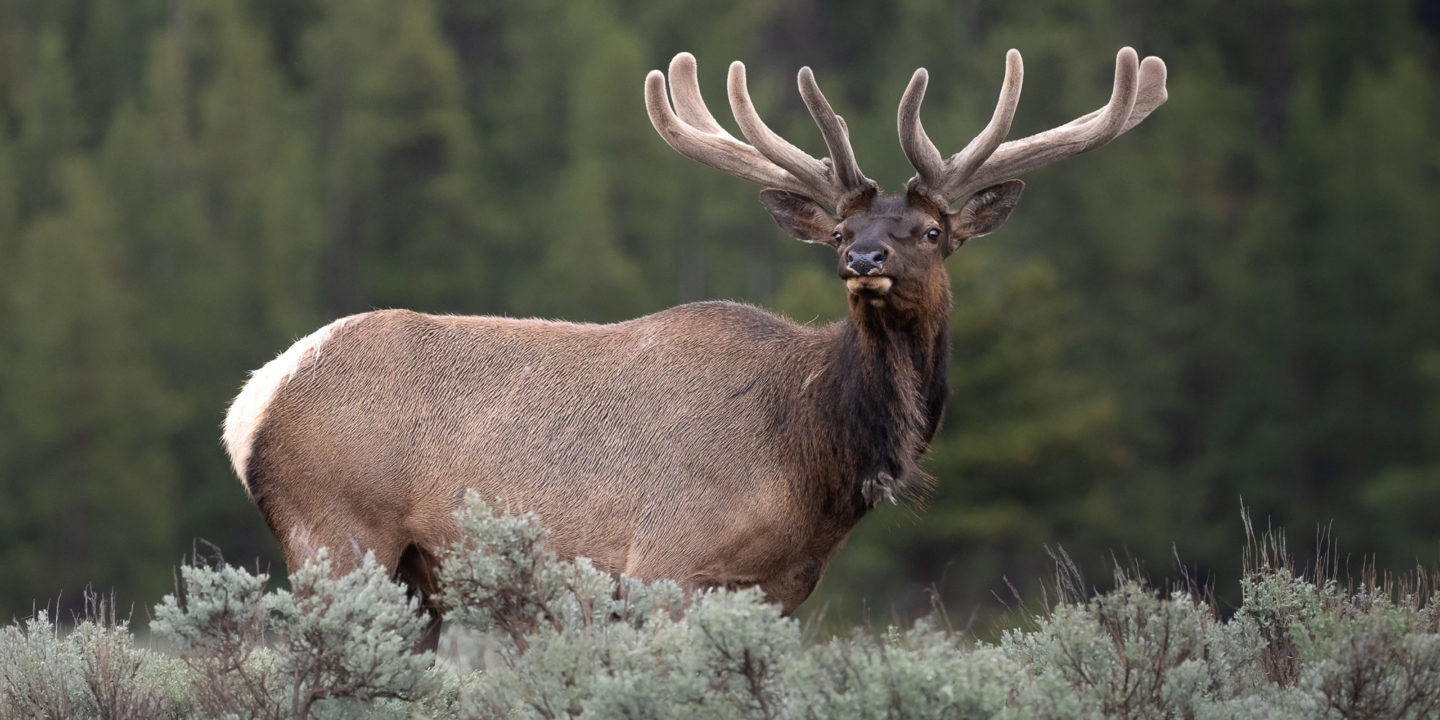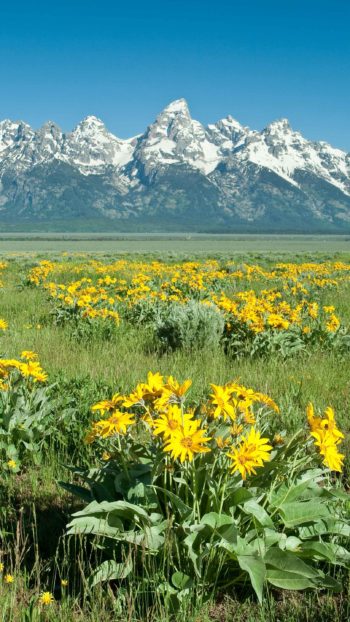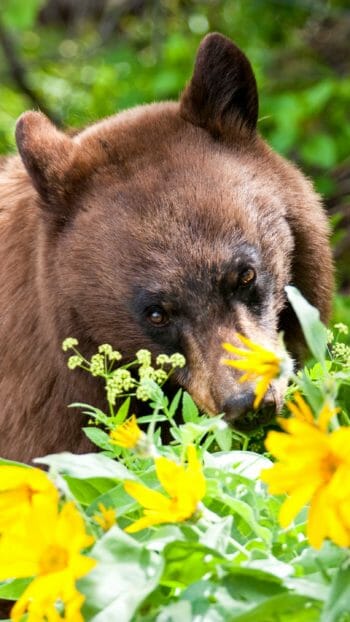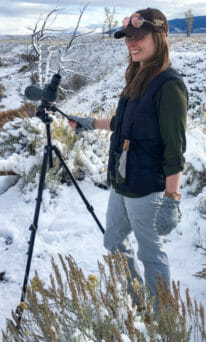The Greater Yellowstone Ecosystem is home to a wide range of impressive wildlife species, drawing people from far and wide to visit in hopes of experiencing them in their natural habitat. Of the popular charismatic megafauna that can be found, the elk is one of the most admired and highly sought after. The regal bull elk with his majestic antlers against a mountainous backdrop is an icon of the West, symbolic of the rugged wilds that still endure today.
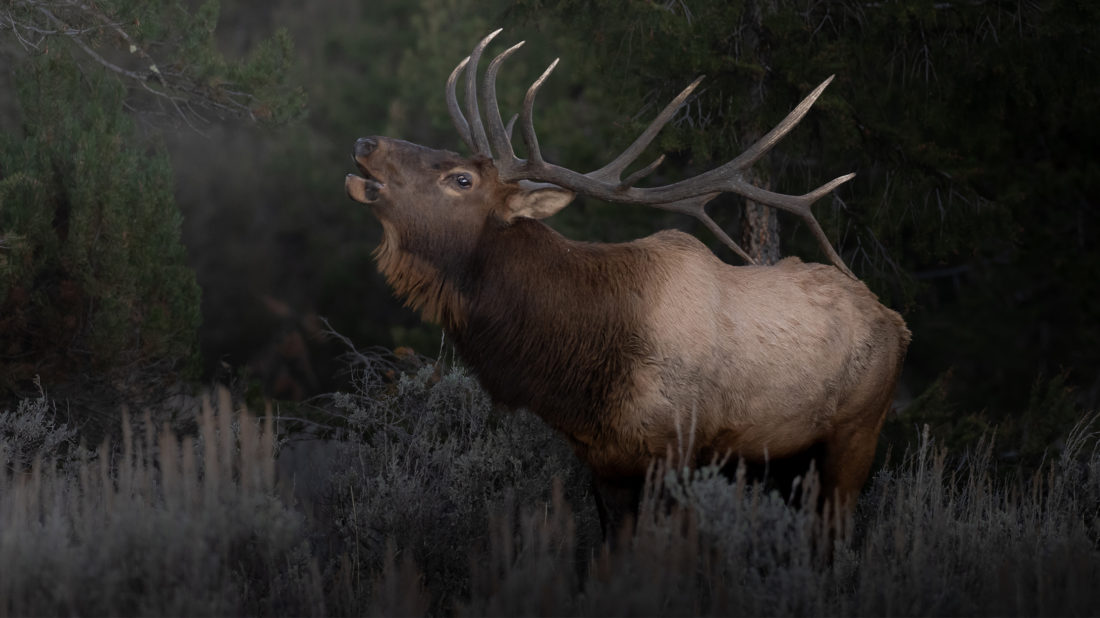
All About Elk
There are four separate subspecies of elk in North America. The Rocky Mountain Elk, also known today as the American Elk, is the subspecies that you will find in Yellowstone and Grand Teton National Parks. Elk are the second largest species of the deer family, right after moose (which, to be confusing, are called ‘elk’ in Europe!). They have a tri-colored appearance, sporting a dark brown head and neck, a lighter brown body, and a large white area on their rump. A Native word for them from the Shawnee and Cree tribes is “wapiti” which translates to “white butt”.
Males are called bulls and females are called cows. Bulls can weigh up to a whopping 900 lbs, while cows tend to weigh around 500 lbs. Bulls have antlers while cows do not, and these antlers will fall off and regrow every single year. Bulls typically lose their antlers in March, and they begin to regrow right away. They are made of solid bone and take about 140-160 days to grow. While they are actively growing, they are covered in a layer of skin called “velvet” due to the velvety appearance from the fine fur. This layer of skin is packed full of blood vessels that directly supply blood and nutrients to the growing bone. In September, the bull elk will undergo a hormonal change and his antlers stop growing. The blood supply gets cut off to the velvet, and he begins to aggressively scrape his antlers against tree trunks to rip the skin off. When he has removed the velvet in only a day or two, he is left with his fully grown, bare bone antlers, ready for the elk rut!
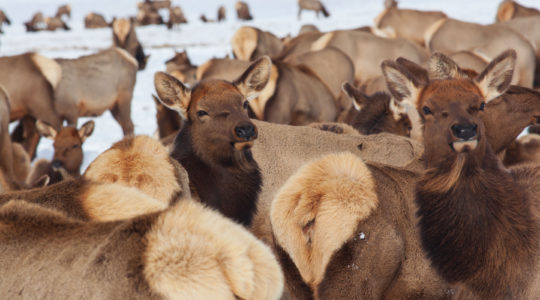
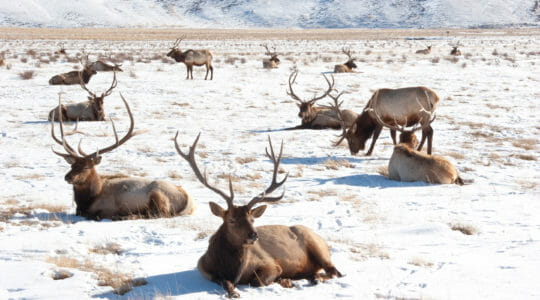
The Height of the Rut
September and early October are the height of the elk rut (breeding season) and definitely the time to be in the park in search of a prime elk experience! During mid-summer months, elk can be difficult to find. They are trying to avoid overheating, so they are typically using the shelter of trees or moving farther up in elevation, away from the roadsides. In the fall when the temperatures cool again, they move back down to the valley to participate in their annual rut and become the stars of the show in the park.
Dominant bulls pour all of their energy into claiming a “harem”, or a group of cows, for himself. Being a dominant bull comes with a lot of work; he needs to keep an eye on every cow in the herd to know when she is ready to breed. Each cow comes into estrus at a different time, and it only lasts between a couple of days to a week. Other bulls who are not dominant enough to have their own harem still want to breed, so they will follow around another bull’s harem and try to sneak into the herd when he isn’t looking. The dominant bull must try to breed with every female and keep the other males away at the same time- this is so time consuming that he essentially forgoes food and water for the duration of the rut.
The most exciting part of the elk rut is the characteristic “bugle”, a call that bulls make. This bugle is a long, high pitched call that lasts a few seconds in duration and, in the right conditions, can be heard from miles away. It’s a way to establish dominance, challenge other bulls, and attract females. Exploring the national park in the crisp fall air with the light of the rising sun, hearing the ethereal elk bugle through the trees is an incredibly special experience that shouldn’t be missed.
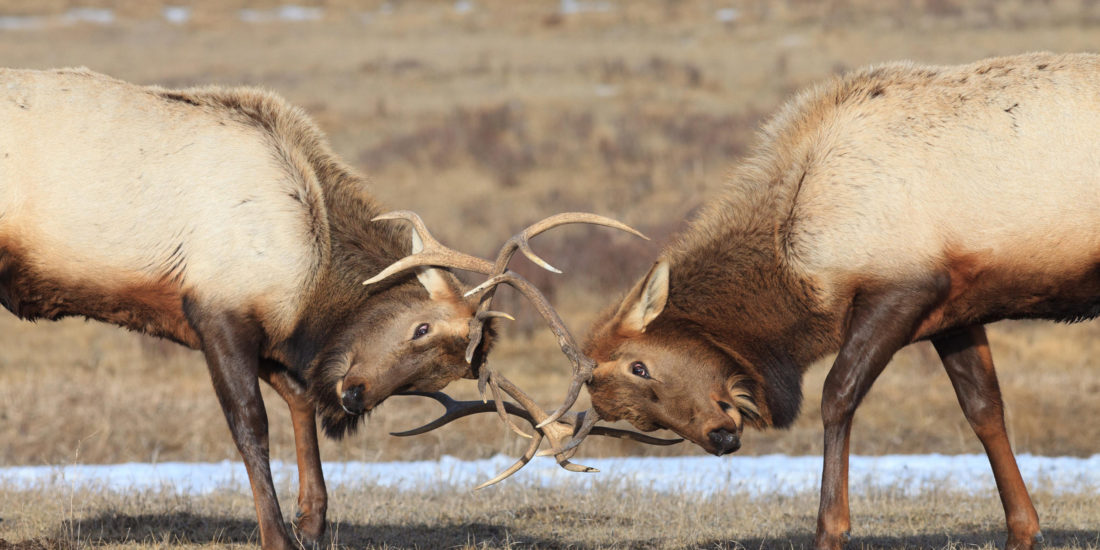
How to Experience the Elk Rut
Coming to Jackson Hole during the months of September and October ensures that you are in the right place at the right time for this exciting event. But how do you get front and center to witness this annual performance? Taking a tour with Jackson Hole Wildlife Safaris is an excellent way to set yourself up for the best possible experience in the park.
Full Day Grand Teton Tour
Opting for our 8-hour full day Grand Teton tour is the best way to truly get the most out of your time in the park and come away with a comprehensive introduction to an extraordinary ecosystem. Having a local guide lead you into the wild landscape with the knowledge of where to go to find wildlife and the best time to visit these locations gets you the best possible chance for encounters.
Your guide will pick you up early in the morning with the goal to be in the field for dawn. We know it’s not easy to get up so early on vacation, but we promise it is worth it! These are the hours of the day that many animals are most active. Elk are crepuscular, which means that they are most active during dawn and dusk. The benefit of the fall season is that the temperature generally stays cool, which means these afternoons see more movement than midday in the summer.
Full Day Photography Tour
If you’re excited to see the elk rut in the painted fall landscape and are hoping to capture some special images from your visit, our full day photography tour is just what you need. You will be led by an experienced, professional photography guide who will be happy to help you with your photography gear, answer any questions you may have about photography, and share some of their best photography tips. Our guides are well-versed in popular photography spots and will also encourage you to experiment at each location, facilitating opportunities for you to produce unique work. Each tour will be customized to your physical and technical skills, and your areas of interest.
In addition to being an expert in photography, your guide is an experienced and passionate naturalist guide who is knowledgeable in elk biology and behavior. Spending almost every day in the field means that your guide is up to date on the current activities and movements of the animals in the park, meaning you have the best advantage for amazing wildlife photography!
Whichever tour you select, this is prime time to be visiting the Greater Yellowstone Ecosystem. Due to the high elevation and inland location, it isn’t uncommon in September and October to bounce between warm, sunny days and snow. Be sure to come prepared for all elements with warm layers, hats and gloves, and comfortable, waterproof hiking boots.
Plan ahead for your autumn adventure and book your tour now!

